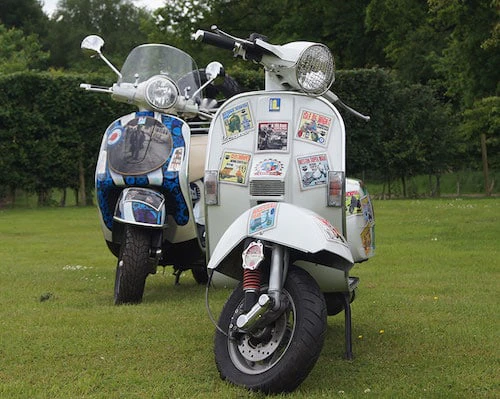back to the blog
Safety Tips for New Motorcycle Riders

Tom Baker · May 29, 2018
Getting out on the road for the first time can be fraught with both excitement and nerves. By driving safely, having the right gear and staying aware on the roads, you’ll grow both in skill and confidence over time.
Buy the right motorbike for your needs
As a new rider, you may have a vision in mind of your first bike. Or, if you’ve recently gained a full motorcycle licence, you may be brimming with excitement at what you can ride next. Typically a large, heavy bike won’t be ideal for a beginner, but what suits you will depend on your size and what you want to use your bike for.
This is still relevant to more experienced riders. Just because you can buy an enormous, powerful bike, doesn’t mean it’s best for you. For example, as a commuter, you might want to think about how fuel efficient your vehicle is. Never buy a bike that is too big or heavy for you to control safely. If you’re unsure, talk to a well-respected dealer in your area or veteran rider who can give you some pointers.

Invest in an advanced motorcycle training course
If you’re going to ride regularly, it’s worth investing in taking an advanced riders course. Doing so will help you stay safe on the roads, learn how to deal with adverse weather conditions and help you to identify and deal with potential dangers. Perhaps most importantly, advanced training can help motorcyclists maintain a strong visible presence. RideTo has recently launched a free 121 motorcycle skills course that focuses on riding in London safely.
On top of the safety benefits, an advanced rider training could help you save money in the long run. Being a better rider to can help you reduce fuel consumption and reduce wear and tear to your vehicle. Some insurers will also offer reduced premiums if you’ve completed an approved course. Check with your insurer which courses they accept.
Choose the right motorcycle gear
By law, you must wear a helmet that meets the safety standards set out by the government. The first thing to check is that a helmet passes either British or EU safety standards. The easiest way to check is by visiting the SHARP website run by the Department for Transport. Also, make sure that your helmet fits — if it’s too loose, it may come off in a crash. According to research by the EU, this happens in 12 percent of accidents.
It’s also important that you wear the right gear. Dress for the slide not for the ride as you'll be thankful you're wearing leathers if you go down on the road at some speed. There are so many styles available now, that there’s really no excuse for not wearing the protective gear. It’s worth investing in style that you like and will also keep you safe on the road - check out all the gear we recommend at our RideTo Store.
Ride Defensively
Despite some recent falls in motorcyclist fatalities, they still make up a disproportionate number of deaths on Britain's roads. A study found that in accidents between a motorbike and a car, car drivers were at fault 60 percent of the time. So, you need to be extra alert.
Don’t wait for a car to indicate to anticipate their movements. If a driver is looking right on the motorway, bear in mind they may be about to change lanes. Keep an eye out for cars pulling out of side streets. Always make sure that you keep a safe distance behind other vehicles so that you have time to react if a driver makes a sudden manoeuvre. Most importantly, never assume that a driver has seen you.


